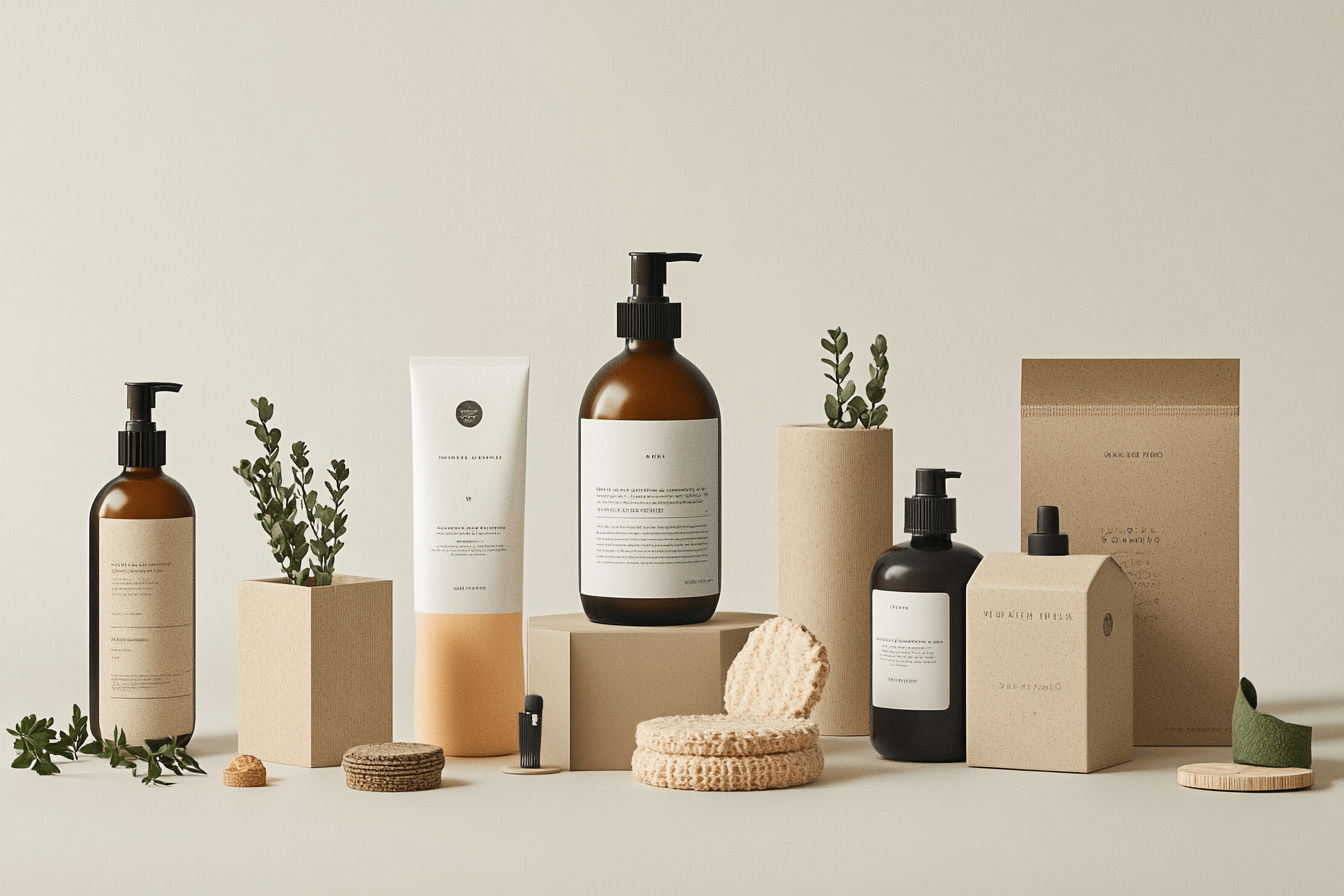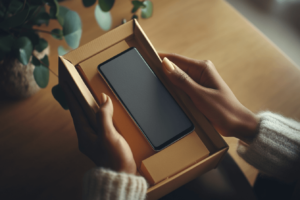Packaging is more than just a protective barrier for a product. It’s a powerful marketing tool that shapes how consumers perceive a product even before they experience it. From the color and texture to the shape and material, packaging plays a crucial role in influencing purchasing decisions and brand identity. In this article, we’ll explore how packaging affects product perception and why it’s a critical element in the overall consumer experience.
The role of packaging in consumer decisions
Packaging is often the first point of contact between a consumer and a product. When shoppers are presented with several options on a store shelf, the design and appearance of the packaging are typically the deciding factors. At a glance, packaging communicates key information about a product, from its quality to its intended audience. But what exactly makes packaging such an essential part of consumer decision-making?
First impressions matter
The saying « you never get a second chance to make a first impression » holds true for products as well. Consumers often make snap judgments about a product based solely on its packaging. Whether it’s the design of a box, the vibrant colors on a label, or the minimalistic look of a bottle, packaging is the first opportunity for a brand to capture attention and evoke a desired emotional response. If the packaging is appealing, it can create excitement and curiosity, encouraging consumers to make a purchase.
On the flip side, poorly designed or unappealing packaging can have the opposite effect, making the product seem subpar or low quality. It may even result in the consumer choosing a competitor’s product instead.
The psychology behind packaging design
The psychology of packaging design goes beyond aesthetics. It involves understanding how different elements can trigger certain emotions or associations in consumers’ minds. For example, a luxury brand may use black or gold colors to evoke sophistication, while a fun and playful product for children might incorporate bright colors and cartoon characters. The psychological impact of packaging is so powerful that it can even influence how consumers perceive the product’s taste or effectiveness, regardless of the actual quality.
Additionally, packaging designs are often tailored to appeal to specific target demographics. For instance, eco-conscious consumers may be drawn to brands that use recyclable or biodegradable materials, while those looking for high-end products may seek out elegant, premium packaging. Understanding these psychological triggers allows brands to create packaging that resonates with their audience on a deeper level.
The elements of packaging that influence perception
While there are many aspects to consider in packaging design, there are a few key elements that have a particularly strong impact on how a product is perceived.
Color and branding
Colors are one of the most influential design elements when it comes to product perception. Different colors evoke different emotions and associations. For example, blue is often associated with trust and reliability, while red can evoke excitement or urgency. Green is commonly linked to health and sustainability, making it ideal for organic or eco-friendly products. By selecting the right color palette, brands can communicate their values and create an emotional connection with consumers.
Branding also plays a significant role in packaging. A well-recognized logo or distinct brand identity can enhance product recognition and instill confidence in the consumer. Strong branding through packaging helps to create a sense of familiarity and trust, leading to repeat purchases and brand loyalty.
Material and texture
The materials used for packaging have a substantial impact on how a product is perceived. Luxury products, for example, are often packaged in heavier, more durable materials such as thick glass bottles or high-quality cardboard, which signal premium quality. On the other hand, products aimed at a more budget-conscious market may use lighter, more cost-effective materials.
The texture of the packaging also plays a role in product perception. A smooth, glossy finish on a package can give the product a high-end feel, while a matte finish may convey simplicity and elegance. For certain products, such as cosmetics or fragrances, the tactile experience of holding the packaging can influence how consumers feel about the brand overall. Packaging with unique textures can enhance the sensory experience and differentiate a product from its competitors.
Shape and size
The shape and size of packaging are other crucial factors that impact product perception. Packaging that stands out in shape such as a uniquely designed bottle or box can make a product feel innovative or exclusive. For instance, many beverage companies use distinctive bottle shapes to make their products more memorable on the shelf. Similarly, packaging that is easy to handle, store, or open can improve the consumer’s overall experience, leading to positive associations with the brand.
Size also plays a critical role, especially when it comes to product value. Consumers tend to associate larger packaging with better value for money, while smaller packaging may be seen as a premium offering. Brands often adjust the size and shape of their packaging depending on their target audience and the type of product they’re selling.

How packaging reflects the product’s value
Packaging serves as a direct reflection of the perceived value of a product. It acts as a visual representation of a brand’s positioning in the market—whether it’s premium, mid-range, or budget. Consumers use packaging as a clue to gauge whether a product is worth the price they’re paying. For this reason, it’s essential for companies to align the packaging with the product’s value and quality.
Premium vs. budget packaging
For luxury or high-end products, the packaging often carries as much weight as the product itself. Premium packaging is designed to elevate the perceived value of the product inside. Luxury items tend to have elaborate, beautifully crafted packaging that communicates exclusivity and refinement. This type of packaging often uses high-end materials such as embossed paper, metallic foils, or glass containers to reinforce the product’s premium status.
Conversely, budget products often feature simpler, more functional packaging. While the quality of the product may still be high, the packaging is designed to keep costs low. Brands that cater to price-sensitive consumers focus on practicality and efficiency in their packaging, often using basic materials and minimal design elements.
The impact of sustainability on perception
In recent years, sustainability has become an increasingly important factor in packaging design. Consumers are now more environmentally conscious and often choose products based on packaging materials. Brands that use recyclable, biodegradable, or reusable packaging can attract eco-conscious customers and convey a commitment to sustainability. In contrast, excessive plastic or non-recyclable materials can negatively affect a brand’s image, especially among environmentally aware consumers.
Real-world examples of packaging’s influence
There are numerous examples where packaging has played a pivotal role in changing the market or enhancing product perception.
Iconic packaging that changed the market
Brands like Apple have revolutionized packaging by turning the unboxing experience into a highly anticipated event. The minimalist design of their boxes, combined with the careful attention to detail, has set a standard for high-end tech packaging. The experience of opening an Apple product is as important as the product itself, which has helped build a loyal customer base and set Apple apart as a premium brand.
Packaging failures and their consequences
On the flip side, there are also examples of packaging failures that negatively impacted product perception. For instance, when Tropicana redesigned its packaging in 2009, many consumers found it difficult to recognize the brand on the shelf. The backlash was so severe that the company had to revert to the original design. This highlights the importance of packaging design in maintaining brand recognition and consumer trust.
Final thoughts
Packaging is not just about protecting a product; it’s an essential tool that shapes how consumers perceive and connect with a brand. Whether it’s through color, material, shape, or size, packaging influences buying decisions and helps define a product’s value. With the increasing importance of sustainability and design innovation, packaging will continue to evolve as a key factor in the overall consumer experience. Understanding its power can help brands better position themselves in the market and create lasting impressions on their target audience.








